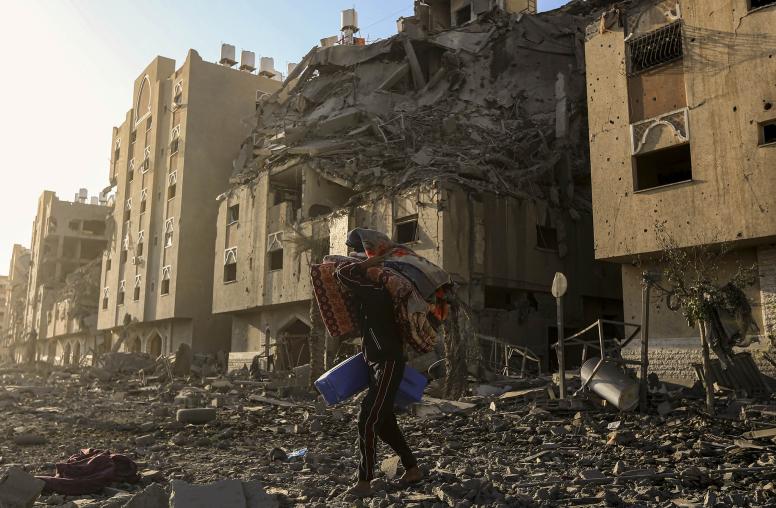Healing the Holy Land: Interreligious Peacebuilding in Israel/Palestine
Peaceworks No. 51
Even though the Israeli-Palestinian conflict is primarily a political dispute between two nations over a common homeland, it has religious aspects that need to be addressed in any effective peacemaking strategy. The peace agenda cannot be the monopoly of secular nationalist leaders, for such an approach guarantees that fervent religious believers on all sides will feel excluded and threatened by the diplomatic process.

Summary
Even though the Israeli-Palestinian conflict is primarily a political dispute between two nations over a common homeland, it has religious aspects that need to be addressed in any effective peacemaking strategy. The peace agenda cannot be the monopoly of secular nationalist leaders, for such an approach guarantees that fervent religious believers on all sides will feel excluded and threatened by the diplomatic process. Religious militants need to be addressed in their own symbolic language; otherwise, they will continue to sabotage any peacebuilding efforts. Holy sites, including the city of Jerusalem, are claimed by both peoples, and deeper issues that fuel the conflict, including the elements of national identity and purpose, are matters of transcendent value that cannot be ignored by politicians or diplomats.
This report argues for the inclusion of religious leaders and educators in the long-term peacebuilding that is required to heal the bitter conflict between Israelis and Palestinians. It documents the efforts of Jews, Christians, and Muslims whose commitments toward a just peace are rooted in their religious convictions. Much of the information presented here is based on interviews conducted with clerics, educators, and peace activists from September 2002 to June 2003.
The interviewees include high-level religious leaders who participated in the historic Alexandria Summit in January 2002, as well as facilitators of grassroots interfaith dialogue, religious educators from the different communities,and activists trying to forge bridges of compassion and cooperation across the political divide.
Politicians and diplomats need to tap the insights and experience of these religious professionals. The efforts described here deserve greater media coverage and philanthropic support. As the fate of the Oslo process shows, peacemaking that prescribes only political, military, and economic arrangements is doomed to fail; leaders on both sides must take into account the feelings, attitudes, yearnings, and symbolic images that Israelis and Palestinians harbor.
Drawing on personal testimonies, the report describes a broad range of initiatives in the area of religious peacebuilding, some of which seek to influence government policy and official negotiations, others that work at the grassroots level, and still others that focus on the international arena.
The report examines, for instance, the Alexandria Summit and efforts to sustain its momentum; local interfaith dialogues; programs aimed specifically at schoolteachers; personal initiatives by Palestinian Muslims; projects that employ the power of traditional symbols and rituals; the work of groups such as Rabbis for Human Rights and Parents' Circle--Bereaved Parents for Tolerance, Democracy, Peace, and Judaism; and some of the very different journeys undertaken by individuals toward the common goal of peacebuilding.
The report concludes with a series of practical recommendations drawn from the narrative. Two appendices offer the full text ofthe Alexandria Declaration and a list of bibliographical resources and web links for additional information.
About the Author
After earning a B.A. from Harvard University and an M.T.S. from Harvard Divinity School, Yehezkel Landau immigrated to Israel in 1978. He served as program coordinator for the Israel Interfaith Association (1980-82), then as executive director ofthe Oz veShalom-Netivot Shalom religious peace movement (1982-91). From 1991 until 2003 he was codirector ofthe Open House Center for Jewish-Arab Coexistence in Ramle, Israel. He has authored numerous articles on Judaism, interfaith relations, and Middle East peace issues and has lectured on these subjects at several ecumenical institutes in Jerusalem, as well as internationally. He is coeditor, with David Burrell, of the book Voices from Jerusalem: Jews and Christians Reflect on the Holy Land. Currently he is faculty associate in Interfaith Relations at Hartford Seminary, a position underwritten through 2006 by the Henry Luce Foundation.



